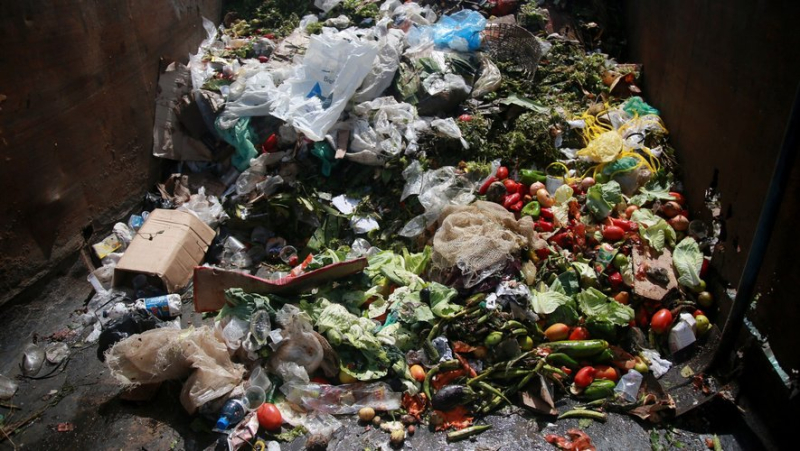Eight figures to know about our waste production around the world

Ce samedi 30 mars est consacré à la deuxième édition de la Journée internationale du zéro déchet, instaurée en décembre 2022 par l'Assemblée générale des Nations Unies. Joa_Souza/Getty Images
Waste has a thousand faces: plastic, food, electronics, textiles… All over the world, we continue to produce it in gargantuan quantities. Here is a (non-exhaustive) overview on the occasion of International Zero Waste Day.
This Saturday March 30 is dedicated to the second edition of International Zero Waste Day, established in December 2022 by the United Nations General Assembly. For this occasion, here are eight figures which help to understand the importance of such a day and remind us of the urgency of significantly reducing our waste production.
More than a billion food wastes wasted worldwide in 2022
A "global tragedy". This is the term used by the UN to denounce the extent of food waste on the planet. According to a report published on March 27, 2024 by the United Nations Environment Program (UNEP), 1.05 billion tonnes of food waste were produced, or 132 kilograms per inhabitant and nearly a fifth of all food available to consumers (including inedible parts). Food waste caused largely by households (60%), and to a lesser extent by catering services (28%) and businesses (12%).
Tens of millions of tons of plastic in the oceans
According to estimates from the European Parliament, between 4.8 and 12.7 million tonnes of plastic end up in the oceans each year, so much so that there are more than 150 million tons to date. Still according to the European Parliament, the cost of marine pollution is estimated between 259 and 695 million euros, “mainly for the tourism and fishing sectors”. "Only 5% of the value of plastic containers remains in the economy. The rest ends up in the trash: which confirms the need to move to a circular approach, underlines the European institution.
3.4 billion tonnes of municipal waste in 2050
Without significant action, global municipal waste production could reach 3.4 billion tonnes in 2050, an increase of 70% compared to the latest World Bank data. Including toxic or dangerous waste that harms not only the environment, but also human health. The international financial institution specifies that the East Asia and Pacific region is the source of the majority of waste globally (23% ), when the Middle East and North Africa region turns out to be the least polluting in this area (6%).
5% of global greenhouse gas emissions
Certain activities, such as transportation, are responsible for the largest greenhouse gas emissions in the world. But waste is not left out: according to the United Nations (UN), "the decomposition of the organic proportion of solid waste" is responsible for around 5% of global greenhouse gas emissions. Hence the need to reduce the volume of waste, whether through recycling or composting of waste.
Plastic far from being fantastic
When we talk about waste, plastic is never far away…hellip; According to the global real-time statistics site Planetoscope, more than 21 billion bottles of water have been consumed worldwide since January 1, 2024. This same site estimates that 89 billion bottles of water plastic are sold every year around the world. An edifying fact accentuated by the lifespan of such a bottle: at least 450 years. And that's without counting on bags and other plastic objects which contribute to polluting the planet. A study published in 2017 by the journal Science Advances estimated the amount of plastics generated by humans since the early 1950s at 8.3 billion tons.
Only 9% of plastic waste is recycled
Recycling is far from having become automatic. According to the Organization for Economic Co-operation and Development (OECD), not only has the amount of plastic waste doubled worldwide in two decades, but only 9% of it is recycled. The rest is most of the time landfilled, incinerated or released into the environment, increasingly contributing to polluting soils and oceans.
The problem of e-waste
In addition to municipal and plastic waste, electronic waste from computers and other mobile phones has been added for several decades. No less than 53.6 million metric tons of this waste were generated worldwide in 2019, and is expected to reach some 74 million tons in 2030, as revealed in the latest Global E-waste Monitor 2000 report.
What about textile waste ?
Among the most polluting industries, fashion generates a significant portion of the world's waste. You should know that no less than 100 billion items of clothing are sold each year in the four corners of the planet, according to data published by Ademe. A production which went from single to double between 2000 and 2014, while these same clothes would most often be worn only around ten times – on average – before being thrown away (the majority) or resold second hand. And that's without counting the 240,000 tonnes of plastic microparticles released into the oceans each year, still on a global level, and 'only' related to the maintenance of synthetic clothing.



